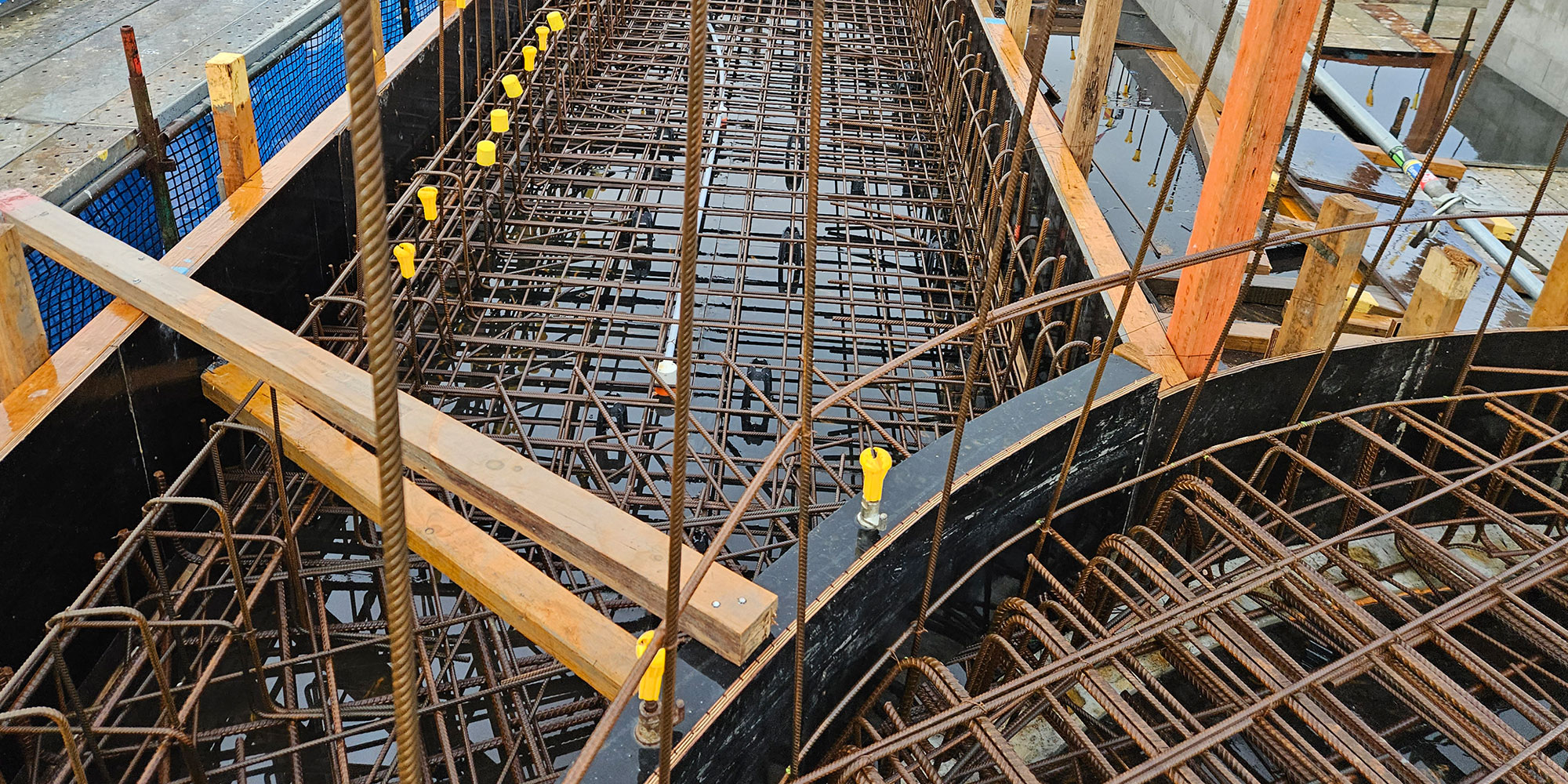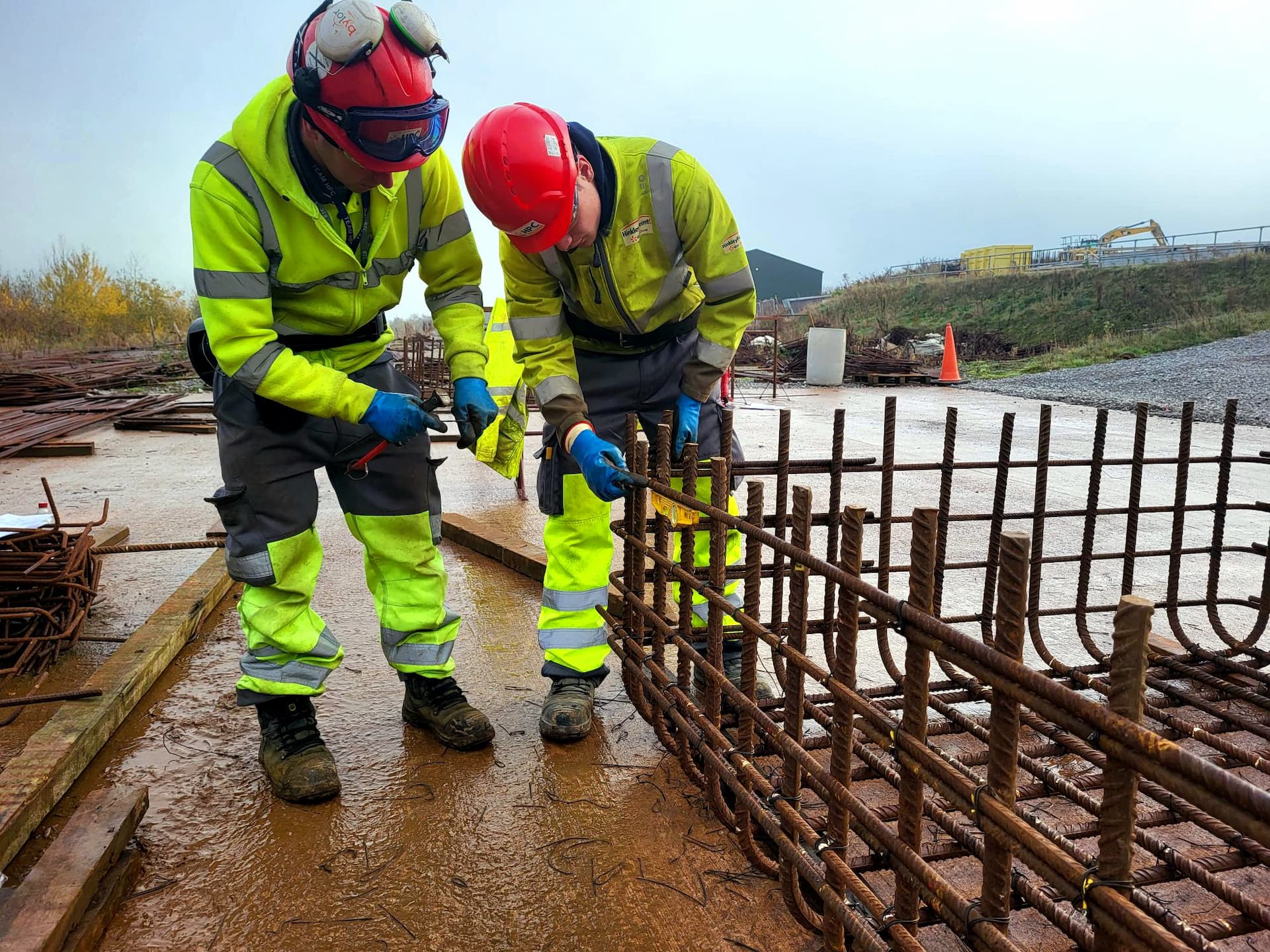On-Site Steel Reinforcement Installation: The Key to Structural Integrity
Wiki Article
Learning Steel Dealing With: Methods for Superior Building And Construction
Grasping steel taking care of is an essential facet of building that straight influences the security and long life of concrete structures. By recognizing the details of precise placement, the appropriate use tools, and common risks to prevent, specialists can considerably improve general job results. Sticking to best safety techniques not only safeguards workers however also adds to the honesty of the framework itself. As we check out these strategies in better information, the ramifications of mastering this important ability ended up being increasingly evident, questioning about how these approaches can change construction techniques.Comprehending Steel Dealing With Essentials
Steel fixing, an essential component in the construction industry, includes the placement and protecting of steel reinforcement bars (rebar) within concrete structures. This procedure is critical for making certain the structural integrity and resilience of concrete elements, as rebar substantially boosts tensile strength, which concrete does not have.Understanding the essentials of steel dealing with starts with acknowledging the different kinds of rebar and their specifications, including diameter, finishing, and grade. Rebar is normally made from carbon steel and is offered in different sizes, which are picked based upon the architectural demands of the job.

Furthermore, making use of ideal washing sizes and anchorage approaches adds to the total stability of the concrete framework. It is vital for steel fixers to abide by safety and security requirements and ideal techniques throughout the installation process, guaranteeing not only the success of the job however likewise the safety and security of all personnel involved.
Necessary Tools and Devices
Effective steel dealing with depends greatly on the right tools and equipment to guarantee precision and performance in the installment process. Key devices consist of rebar cutters, which are necessary for making specific cuts in different sizes of steel bars, and rebar benders that offer the needed angles for appropriate placement. Furthermore, a top quality collection of pliers, particularly tie wire pliers, is crucial for safeguarding rebar with tie cable.Determining tools, such as tape steps and laser levels, assist in precise layout and positioning, while a durable array of clamps and vises help in holding the rebar in placement throughout assembly. Security devices, consisting of handwear covers and goggles, can not be overlooked, as they secure employees from prospective threats connected with steel handling.
For bigger jobs, investing in mechanical tools like rebar linking equipments can dramatically boost efficiency. Finally, correct storage space services, such as racks or bins, assistance arrange products and maintain a secure workplace. By making use of these important devices and equipment, steel fixers can improve their workflow, making certain that architectural honesty and building and construction timelines are satisfied with accuracy
Strategies for Accurate Placement

One reliable method is the use of design templates or noting overviews to develop specific areas for steel bars. These overviews ought to be made from resilient materials to endure the rigors of construction and should be inspected versus building drawings to confirm accuracy. In addition, using laser levels can substantially boost positioning and altitude precision.
Moreover, keeping proper spacing between supports is important. This can be achieved by utilizing spacers or chairs that are developed to hold steel bars in place at the needed distance from the formwork.
Routine assessments during placement ought to be carried out to make certain compliance with project specs. Any type of discrepancies must be resolved promptly to protect against architectural weak points.
Last but not least, collaboration with other trades is crucial, as clear communication can avoid positioning mistakes that might arise from contrasting building and construction activities. By applying these techniques, steel fixers can dramatically contribute to the general high quality and security of the building project.
Usual Blunders to Avoid
While guaranteeing the appropriate positioning of reinforcement steel is vital, numerous usual errors can weaken the stability of the construction process. One regular error is insufficient spacing in between steel bars. Inadequate spacing can lead to congestion, which can jeopardize concrete circulation and bonding, eventually affecting structural strength.Another usual blunder includes neglecting to appropriately safeguard the reinforcement bars during positioning. Failure to adequately sustain the steel or link can cause misalignment, specifically when concrete is put, resulting in architectural weak points. In addition, neglecting the needed cover density often results in premature rust right here of the steel, diminishing the durability of the structure.
Inappropriate cutting and bending of rebar is an additional risk that can lead to stress and compression problems within the concrete. It is necessary to comply with accurate requirements to preserve the designated load-bearing capacity.
Lastly, inadequate inspection prior to concrete putting can permit these mistakes to go undetected. Normal checks and adherence to develop requirements are vital to guarantee that steel repairing is done appropriately. By staying clear of these common mistakes, construction experts can improve the resilience and security of their projects, making sure an effective outcome.
Finest Practices for Security
Guaranteeing the stability of steel taking care of is not just regarding preventing common mistakes but likewise concerning executing best practices for safety and security on the building site. A detailed safety and security plan ought to begin with correct training and alignment for all personnel involved in steel taking care of. Employees must know with safety methods, tools use, and emergency procedures to reduce risks successfully.
Keeping a well organized and clean job setting is just as crucial. Clear pathways and correct storage space of products can substantially decrease journey and fall threats. Carrying out robust interaction methods, such as hand signals or radios, can avoid accidents triggered by miscommunication.
Lastly, promoting a society of security among group members urges vigilance and responsibility. Regular security conferences and open discussions concerning potential hazards will certainly advertise aggressive measures and enhance overall safety and security on the construction site. By sticking to these ideal methods, the threat of accidents during steel fixing tasks can be considerably reduced.
Verdict
Mastering steel fixing is vital for guaranteeing the architectural stability and sturdiness of concrete building and constructions. By utilizing specific find methods, utilizing suitable Get the facts devices, and sticking to finest techniques, the quality of building can be dramatically enhanced. Recognition of common mistakes and a strong dedication to safety and security even more add to predict success. Inevitably, the application of these approaches fosters a reputable and reliable workplace, resulting in remarkable results in building and construction tasks.Mastering steel fixing is a basic aspect of building and construction that straight influences the security and durability of concrete structures. By utilizing these crucial devices and devices, steel fixers can boost their process, making certain that structural honesty and building timelines are satisfied with precision.
While ensuring the proper placement of reinforcement steel is critical, several common errors can threaten the honesty of the building procedure.Making certain the honesty of steel repairing is not just concerning preventing typical blunders yet also about executing finest methods for security on the building and construction site.Understanding steel dealing with is vital for making sure the structural integrity and sturdiness of concrete buildings.
Report this wiki page